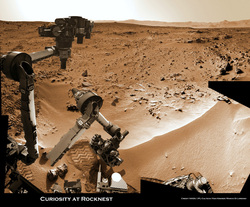
Since we are on the subject of the gas giant planets - with Jupiter #1 as far as size & mass - Saturn comes in as #2 but has its own uniqueness. The extensive ring system for one. Although Jupiter and the other gas giants all have a ring system - Saturn's rings stand out even when viewed through a small telescope. Galileo is given credit to discovering the rings although he couldn't figure out what they were at the time (1610). He famously wrote "Saturn has ears." It wasn't until later when telescopes were built with better magnification that the ring system labeled A, B & C were discovered. Today we now know that Saturn's rings are made up of thousands of "ringlets" that are held in place by "shepherd moons" around Saturn. Since it takes about 29 earth-years for Saturn to orbit the Sun once - we see the rings at different angles. Sometimes the rings seem to "dissapear" when viewed edge-on (last happenned in 2008). The rings appear extremely bright because they are made of ice particles that reflect sunlight. One moon - Enceladus - actually spews out ice particles through cryo-volcanism that may contribute to part of the ring system. The Cassini spacecraft is currently orbiting Saturn and will continue until 2017. So stay tuned for even more exciting discoveries with a possible new spacecraft launch to Saturn in 2020!



 RSS Feed
RSS Feed
